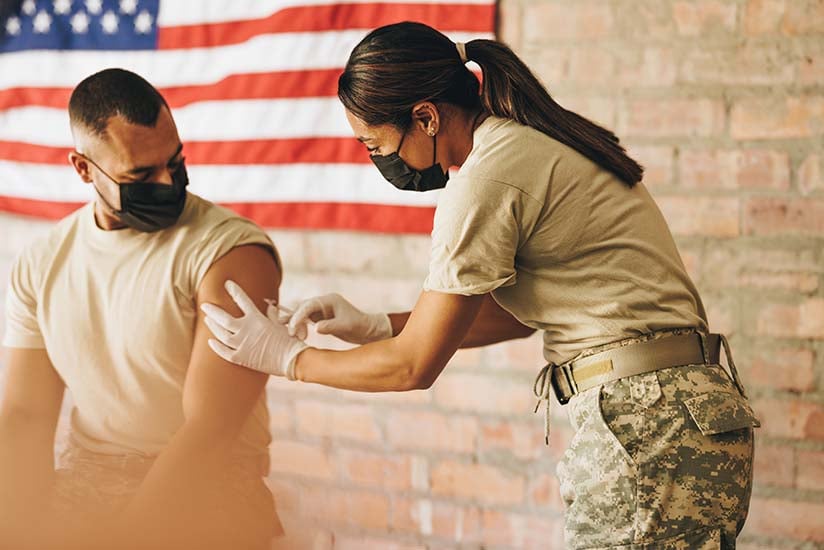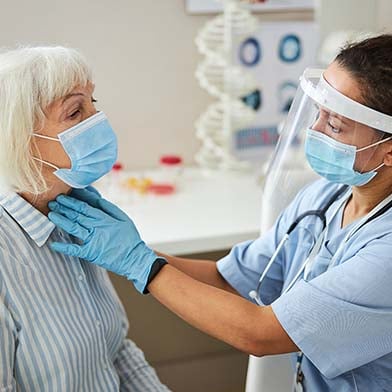Types of Nurses and What They Do
4 min read
When considering a career in nursing, understanding all the different types of nurses, degrees, and specialties can be confusing. Below are the three primary types of nurses and what they do, as well as education requirements and typical salary ranges for each role.
Licensed Practical Nurse (LPN)
LPNs (sometimes called LVNs, or Licensed Vocational Nurses, or LVNs) provide basic care to their patients. Their contribution is key, as they offer detailed assistance to registered nurses (RNs) or physicians by monitoring patient health, updating health records, and administering treatment. LPNs can work in various health care settings, including assisted living facilities, hospitals, and physicians' offices.
An LPN must hold a high-school degree or equivalent and complete an accredited practical nursing certificate program. These programs are often one year long. LPNs must also pass the National Council Licensure Examination for licensed practical nurses (NCLEX-PN). According to the Bureau of Labor Statistics (BLS), the average salary for LPNs nationwide is $54,620. Among nursing fields, the LPN track is an entry-level option for those looking to make a positive impact on both patients and their careers.
Registered Nurse (RN)
Registered nurses monitor, treat, and educate the patients in their care. Their holistic practice takes into consideration each person's physical, psychosocial, and spiritual needs to achieve optimal health. RNs lead with compassion and are often the first line of communication for patients and family members.
According to the BLS, a majority (60%) of RNs work in hospital settings, while others practice in nontraditional settings such as schools, cruise ships or airplanes, correctional facilities, occupational health settings, and assisted living homes.
Registered nurses can have specialties ranging from labor and delivery (L&D) to pain management and oncology. Some RN specialties require on-the-job training. Other specialty certifications — such as Nursing Case Management Certification (CMGT-BC) or Nurse Executive Certification (NE-BC)— may require advanced, formal education in addition to training.
The precise day-to-day activities of an RN vary based on location, but overall duties consistently include:
- Logging observations of patient behavior and updates, including vital signs
- Providing direct care to patients, such as administering treatment or performing diagnostics
- Participating in cross-team coordination to help devise the best patient care
- Educating and supporting patients and family members; or, in the case of public health nurses, working with entire populations
The path to becoming an RN typically entails either a four-year bachelor's (Bachelor of Science in Nursing, or BSN) or a two-year associate degree in nursing (Associate's Degree in Nursing, or ADN). Other RNs get licensed through an approved program, such as an Accelerated Bachelor of Science in Nursing (ABSN). All registered nurses must pass the NCLEX-RN exam to receive their license and must also hold up-to-date credentials per the Board of Nursing (BON) in their state.
According to the BLS, the typical salary for an RN is $81,220 per year. Registered nurses are eligible to join the American Nurses Association. Learn more about the benefits of being a member.
Advanced Practice Registered Nurse (APRN)

APRNs encompass multiple areas of nursing, including nurse practitioner (NP), clinical nurse specialist (CNS), nurse anesthetist (CRNA), and certified nurse midwife (CNM). APRNs must be registered nurses and hold either a master's degree or a doctorate in nursing. In most states, they must also pass a national certification examination, such as one of the ANCC Certifications. The certification will correlate to at least one specific type of health care, though an APRN's overall scope of practice may be broader. NP specialties include, but aren't limited to, the following:
Family Nurse Practitioner (FNP): FNPs provide continuous care to patient populations across the lifespan. In many instances and depending on state-issued authority, their practice parallels that of a primary care physician.
Psychiatric Nurse Practitioner (PMHNP): Psychiatric nurse practitioners work in the mental health field. Depending on the state in which they're licensed, they might provide direct psychiatric assessments and diagnoses and prescribe medication for emotional, behavioral, or psychiatric health conditions.
Women’s Health Nurse Practitioner (WHNP): NPs who specialize in women's health work with patients to treat and prevent illnesses and conditions unique to women. Responsibilities of a WHNP include prescribing oral contraceptives, assessing risk factors and treating disorders pertaining to fertility, and working alongside obstetricians and gynecologists.
Acute Care Nurse Practitioner (ACNP): ACNPs treat patients with acute, critical, chronic, or complex health conditions. They may work in various settings, including designated units at hospitals. Depending on their precise licensure, they treat different age groups. For instance, an Adult-Gerontology Adult-Gerontology Acute Care Nurse Practitioner (AGACNP-BC) works with patients from adolescence (13+) through older adulthood.
In all 50 states, NPs can prescribe certain categorical medications such as antibiotics and narcotics. In just under half, NPs also have full practice authority and can run their own practice.
The BLS has ranked APRNs as the fastest-growing occupation in the United States, and salaries reflect the high demand: The median annual wage for an APRN is $123,780.
Different Nursing Careers for Every Professional Goal
The nursing profession offers career paths aligned to diverse training timelines and earning potentials. From LPN to RN to APRN, nursing provides a track suitable for every aspiring nurse.
Images sourced from Getty Images


